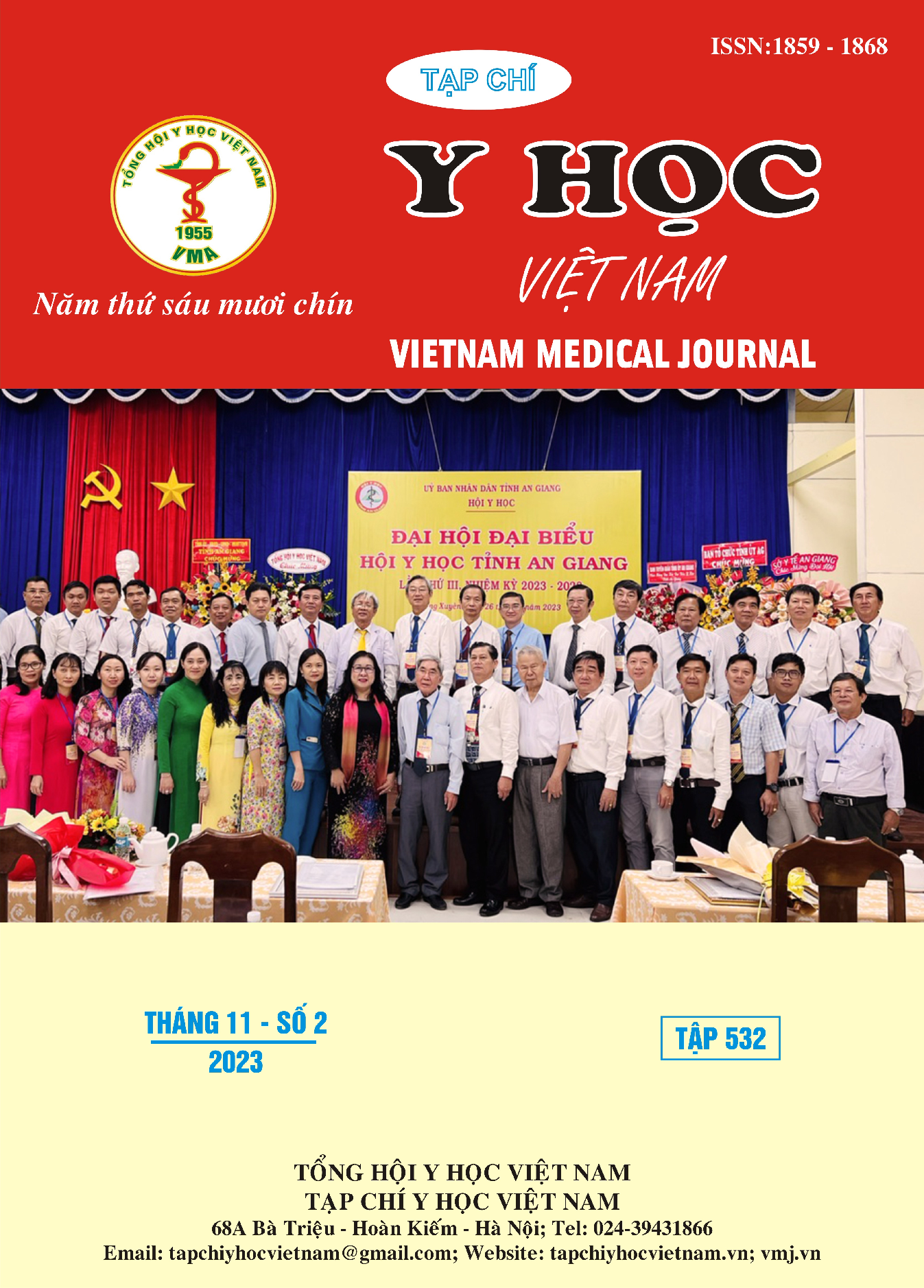ASSESSMENT OF RESULTS OF PHACOEMULSIFICATION SURGERY WITH INTRAOCULAR LENS ACRIVA TRINOVA PRO C PUPIL ADAPTIVE
Main Article Content
Abstract
Objectives: To evaluate the results of phacoemulsification surgery with intraocular lens Acriva Trinova Pro C Pupil Adaptive. Subjects and methods: A non-control clinical interventional study on 51 eyes of 45 patients who received phacoemulsification surgery with intraocular lenses Acriva Trinova Pro C Pupil Adaptive at Day- Surgery Department, National Institute of Ophthalmology, Hanoi, Vietnam from March 2023 to July 2023. Results: Among 45 patients, there are 16 men accounting for 35,6% and 29 women accounting for 64,4%. The mean age of the patients in the study was 59,84± 9,27 (the youngest age was 34 and the oldest was 76). The majority of core hardness is at level 3, accounting for 43,1%. The preoperative visual acuity of patients in the study group was < 20/200, accounting for the majority (43,1%). After 3 month, the rate of the corrected distance visual acuity and corrected intermediate visual acuity better than 20/25 were 78,4 % and 84,3 %. No eye had corrected distance visual acuity worse than 20/50. The corrected near visual acuity was worse than the other two distances. 33,3 % eyes had CNVA better than 20/25 and 66,7 % eyes had CNVA from 20/40 to 20/30. The halos and glare was recorded in 6 patients with mild severity, little frequency, and did not affect daily activities. Evaluation of satisfaction level, no patient is dissatisfied after surgery. 100% of patients feel very satisfied at distance and intermediate vision. With near viewing distance, 66,7% of patients were very satisfied, 33,3% of patients were satisfied, vision increased as expected, however sometimes patients still need glasses to help when reading books and newspapers. Conclusion: Phacoemulsification surgery with intraocular lens Acriva Trinova Pro C pupil Adaptive provides good visual acuity at all distances, the halos and glare is no problem, and the postoperative satisfaction of all is high.
Article Details
References
Đoán và Điều Trị. Nhà xuất bản Y học; 2019.
2. Alió JL, Plaza-Puche AB, Piñero DP, Amparo F, Rodríguez-Prats JL, Ayala MJ. Quality of life evaluation after implantation of 2 multifocal intraocular lens models and a monofocal model. Journal of Cataract & Refractive Surgery. 2011;37(4):638-648.
3. Calladine D, Evans JR, Shah S, Leyland M. Multifocal versus monofocal intraocular lenses after cataract extraction. Cochrane Database Syst Rev. 2012;(9):CD003169.
4. VSY Biotechnology R & D Center. Published online 2021.
5. Satellite Symposium ESCRS.; 2021.
6. Bostanci Ceran B, Arifoglu HB, Ozates S, Tasindi EE. Refractive results, visual quality and patient satisfaction with a new trifocal intraocular lens design. Published online 2020. Accessed August 22, 2022.
7. Amigó-Francés A, Castillo-Gómez A, Carmona-González D, et al. Comparative study of visual results obtained with two Trifocal lens models in cataract surgery. Journal of Clinical Research and Ophthalmology. 2020;7(2):054-060.
8. Nghiêm Mai Phương. Đánh Giá Kết Quả Phẫu Thuật Phaco Đặt Thể Thủy Tinh Nhân Tạo Ba Tiêu Cự. Luận văn thạc sỹ y học, Trường Đại học Y Hà Nội. 2015.


